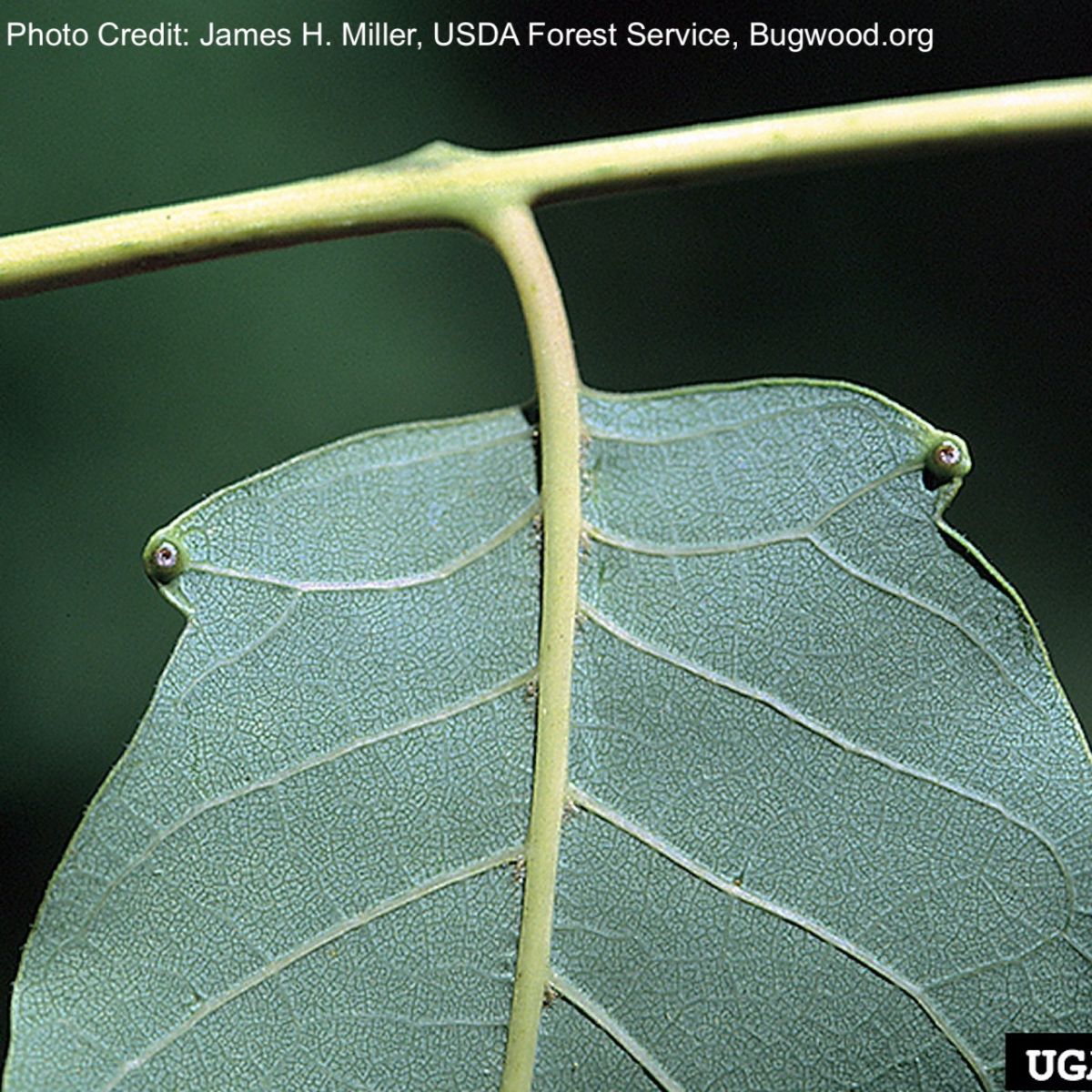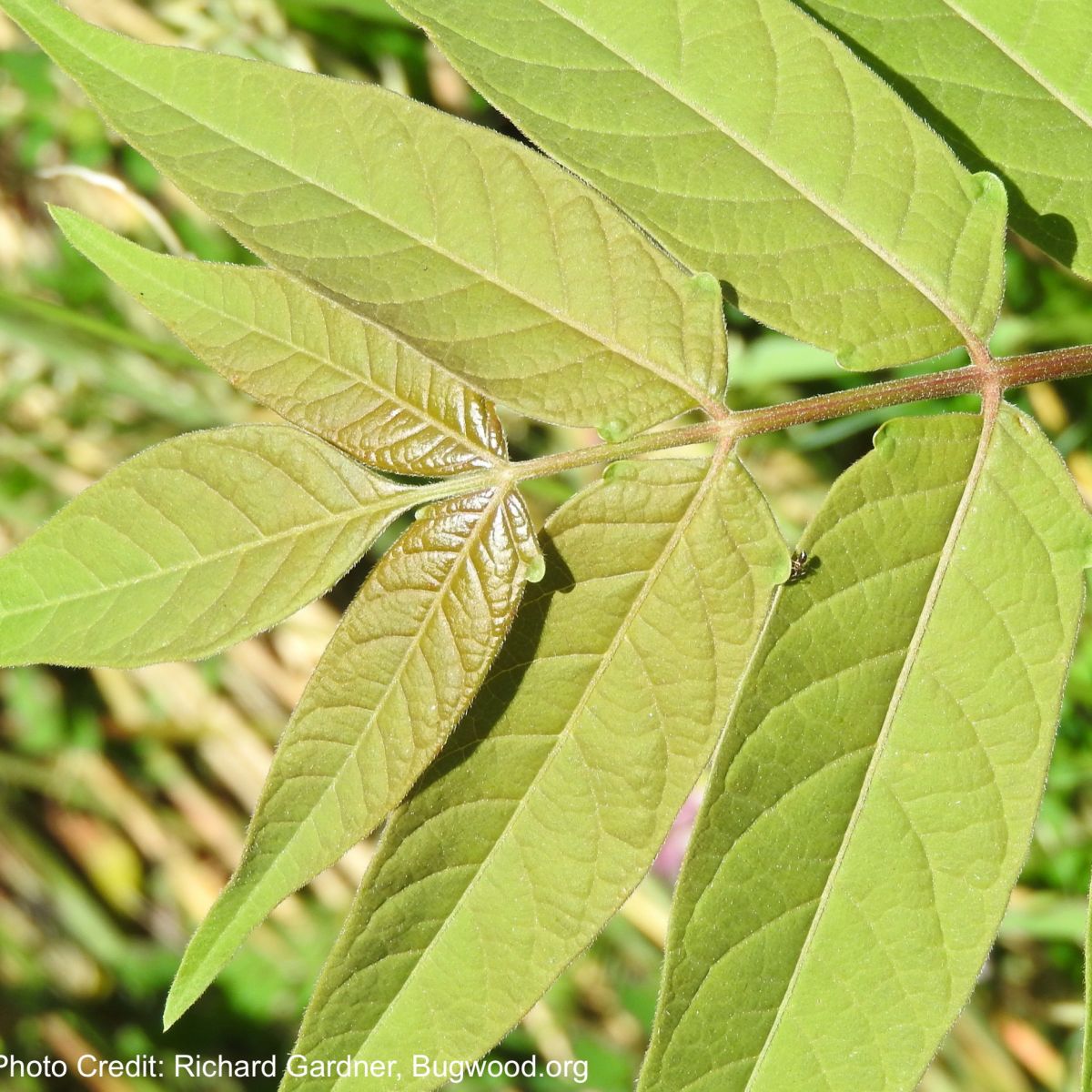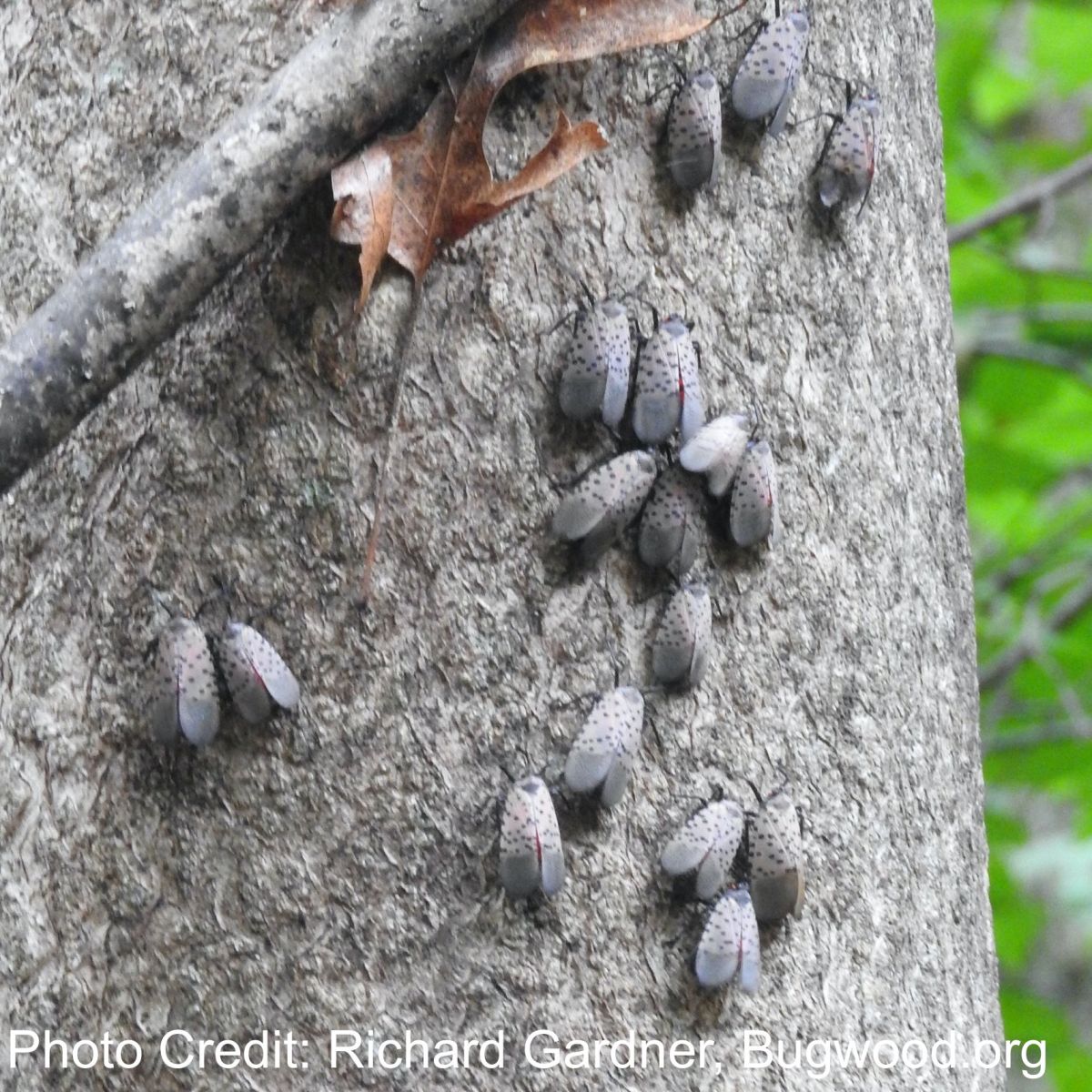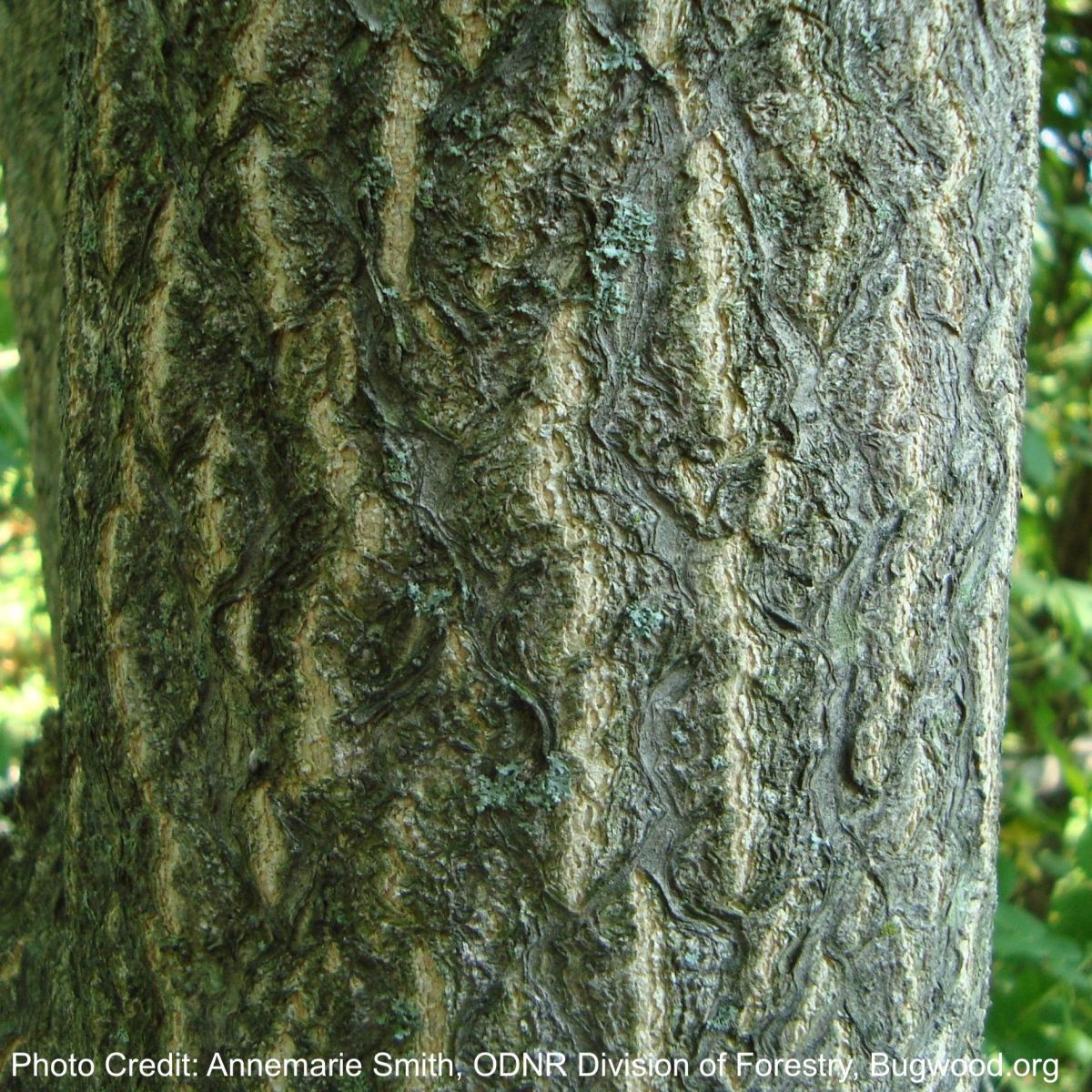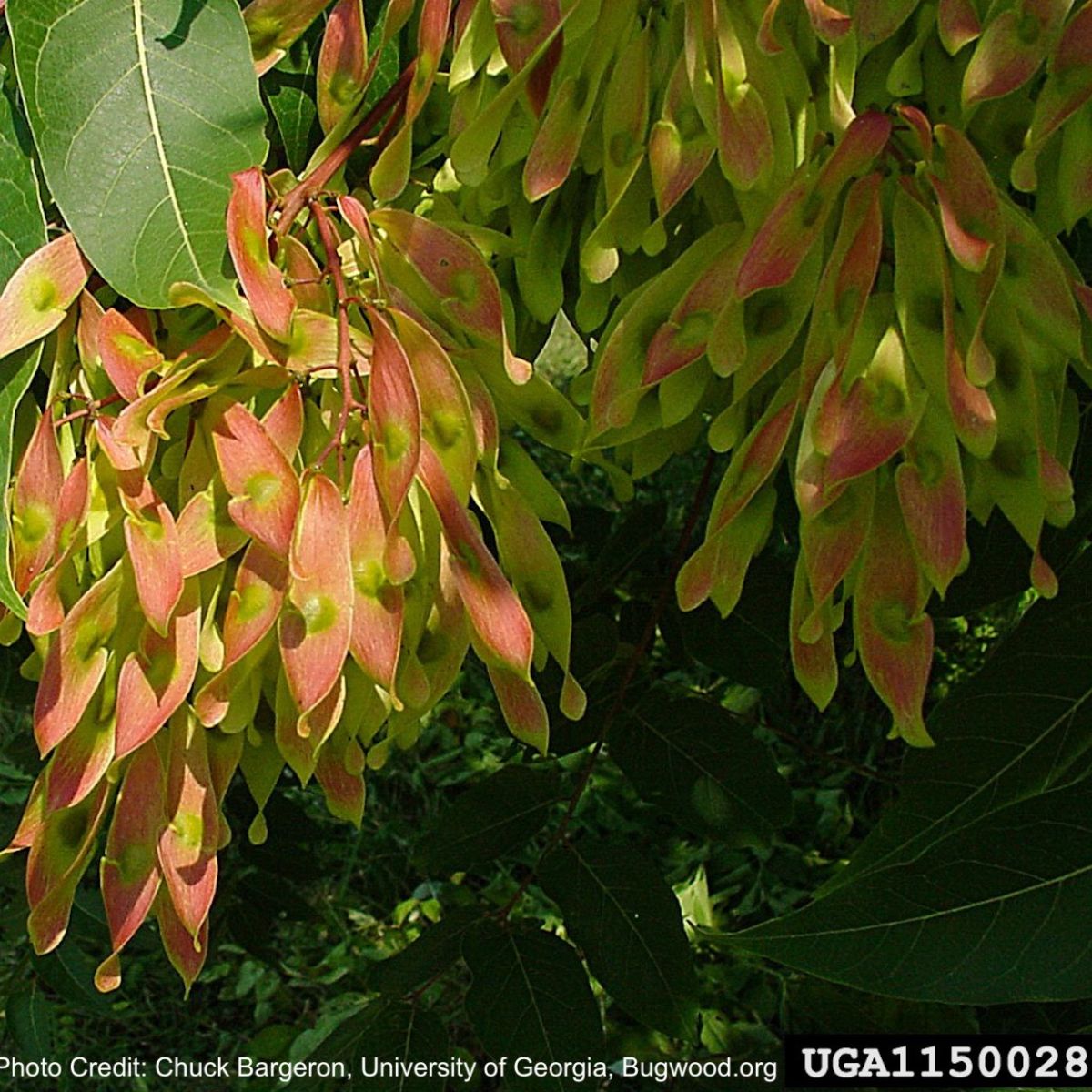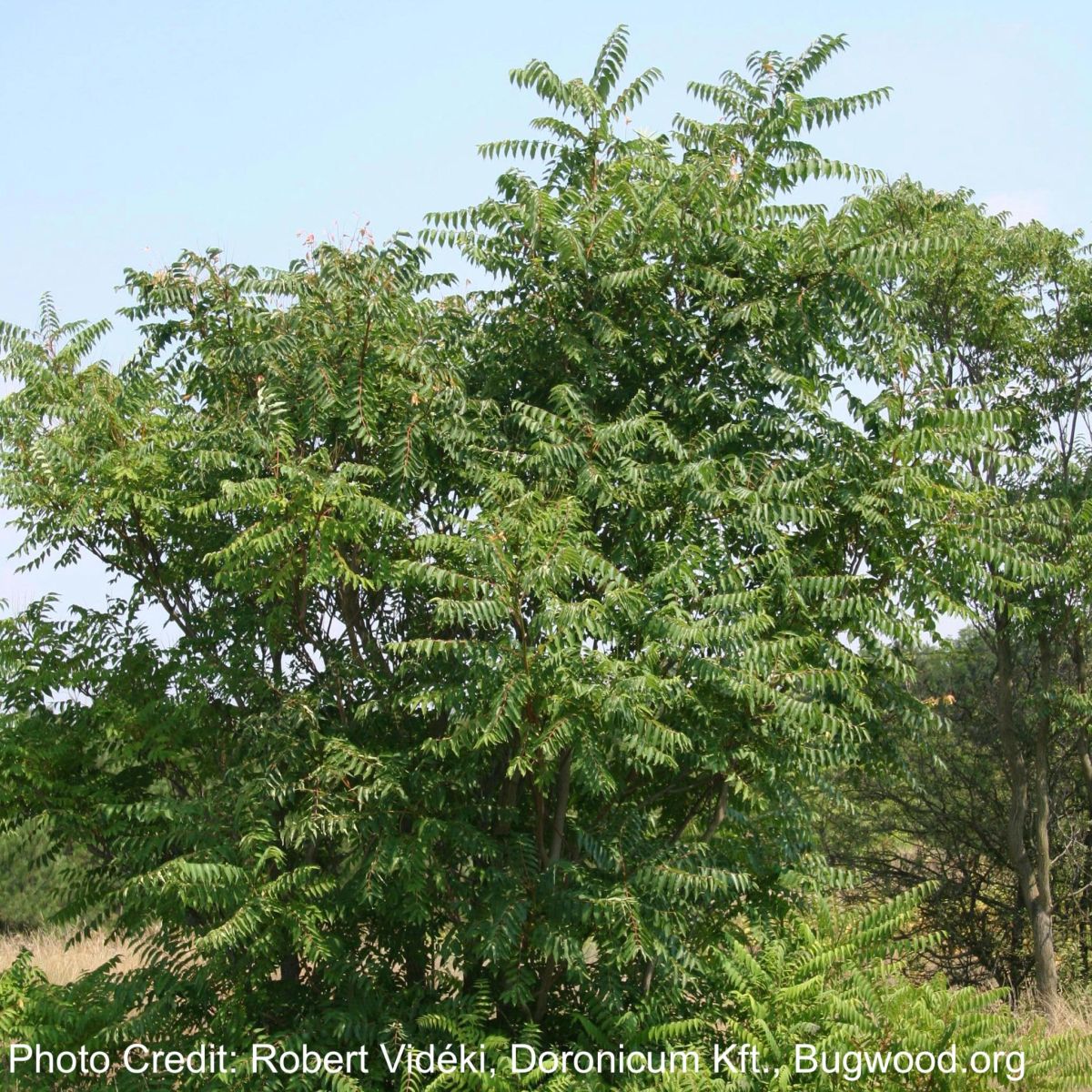
Priority: Eradicate
General: The common name, Tree of Heaven, refers to its towering height, which can be over 20m tall. Tree of Heaven is the preferred host of the invasive insect, Spotted Lanternfly, which has been spreading across North America, severely damaging vineyards & orchards.
Height: Up to 24m tall
Flowers: Flowers are small & white, in loose cone-shaped clusters. Fruits are a showy red samara (winged seeds like a helicopter).
Leaves/Stems: Leaves distinctive, large, pinnately divided (1 – 4 feet in length), each with 10 – 25 leaflets. Leaflets are smooth & oval. When crushed, leaves smell like burnt rubber. Bark is smooth, grey, textured with prominent lenticels.
Roots: Taproot system. Shallow & widespread.
Chinese Sumac
Ailanthus glandulosa
Japanese Walnut (Juglans ailanthifolia) – To distinguish, note that Tree of Heaven has 1 – 3 coarse teeth at the base of each leaflet & a noticeable gland on the underside of each tooth
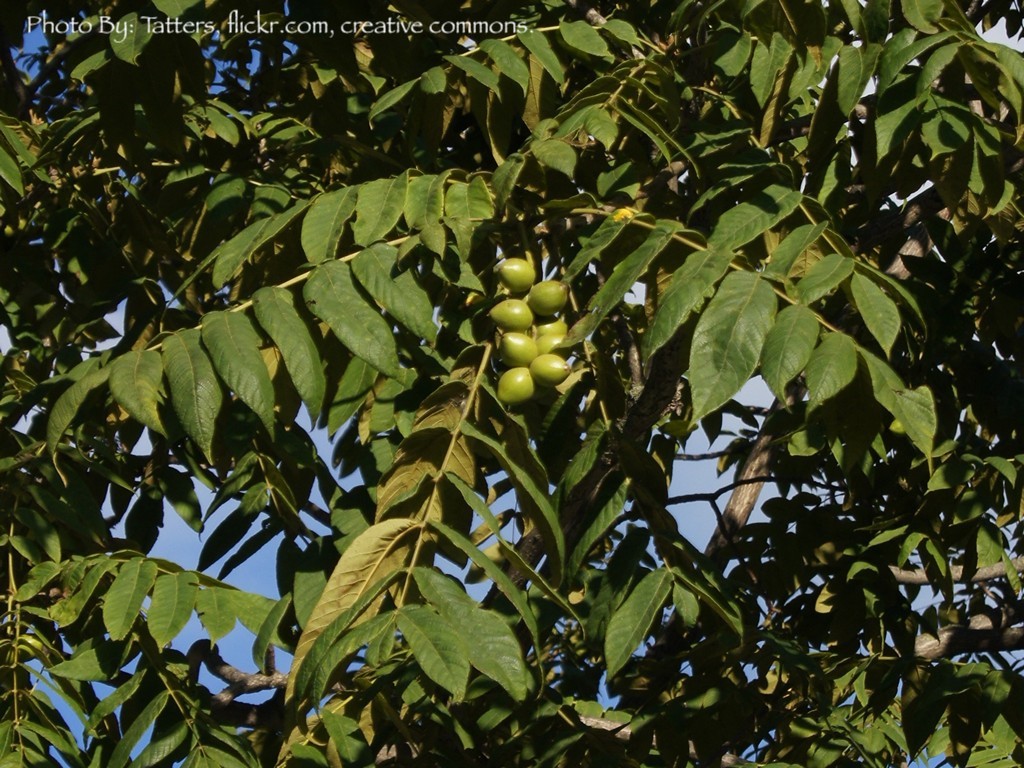
Staghorn Sumac (Rhus typhina) – Staghorn Sumac leaves are odourless / Tree of Heaven leaves produce an unpleasant odour when crushed
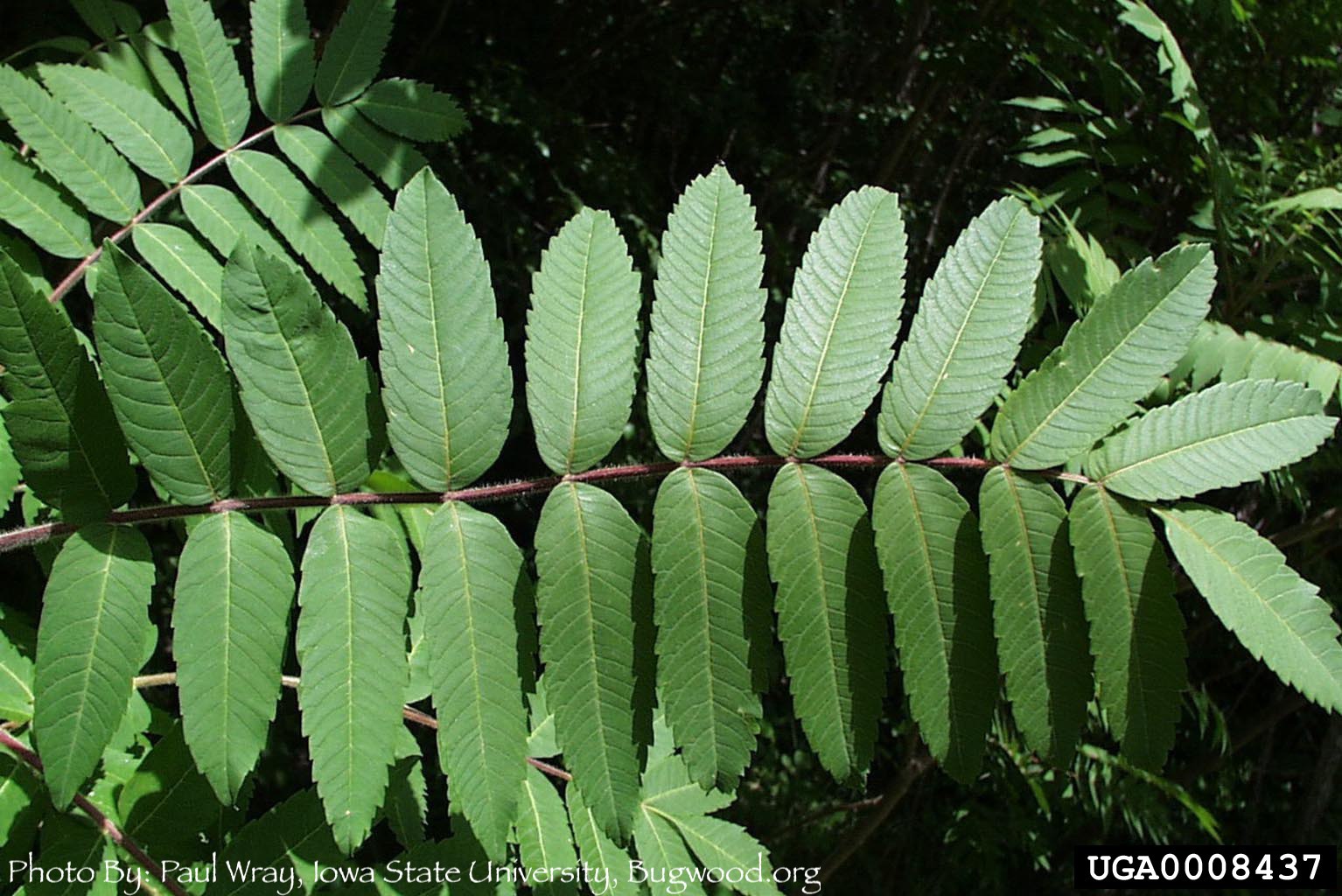
Smooth Sumac (Rhus glabra) – Smooth Sumac leaves do not have an unpleasant odour & are serrated/toothed, while Tree of Heaven leaflets are smooth.

Where did it come from? China. Introduced as a garden ornamental.
Where does it grow here? Plants grow under a variety of conditions & are tolerant of nutrient-poor soils like clay. Plants can sprout out of sidewalks or streets. Also grows along roadsides, lakeshore, gardens, empty fields, & forest edges.
Reproduction: By seeds, roots, & suckers. A single plant can produce 325,000 seeds per year. Will sprout from cut stumps & root fragments. Seeds remain viable in the soil for over 1 or 2 years.
When does it grow, flower & seed? Blooms in late Spring, creating small, cone-shaped clusters of flowers that turn into red seeds which are flat, papery, & twisted.
Spreads By: Wind dispersal of seeds & also by water, birds, & farm equipment. Also spreads asexually by suckers. It sprouts readily from cut stumps and root fragments.
Plant Type: Tree
- Tree of Heaven is the preferred host of the Spotted Lanternfly, an invasive insect that damages vineyards & orchards. It poses a significant threat to the agricultural industry
- Competitive & fast-growing, it crowds out other plants
- Creates dense thickets of cloned trees
- Chemicals in the Tree of Heaven suppress growth of surrounding plants (allopathic effect)
- Aggressive roots can damage sewers, foundations, sidewalks, & roads.
- Exposure to sap or plant parts can cause skin irritation
- Review your property regularly for this species.
- Treatment Remove small patches before it flowers & sets seed.
- Cover bare patches or disturbed soil by planting or seeding with non-invasives.
- Check areas where you have removed invasives for any new plants that year and in future growing seasons.
- Dispose of invasive plants responsibly. Bag them for disposal at the local landfill. Composting and burning are not recommended.
- Contact LRISS for specific treatment recommendations.
E-Flora BC https://linnet.geog.ubc.ca
Okanagan Invasive Species Online https://www.oiso.ca
Fire Effects Information System (FEIS) https://www.fs.fed.us
Photo Gallery
